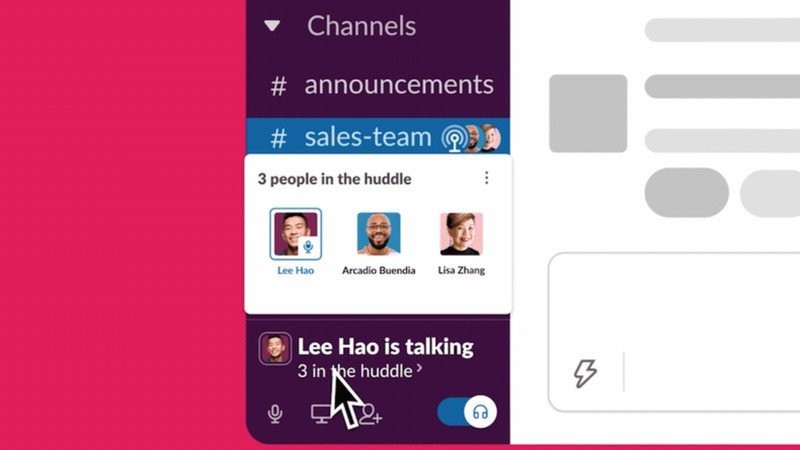
Slack first announced these tools last year, initially saying they were experimental, but quickly shifting them to the product road map. This is currently available to a limited set of Business+ and Enterprise Grid customers, but should be more widely available some time later this year, according to the company. It’s another way Slack can keep users in Slack to find the information that they need, while avoiding context switching. The Rimeto product has in fact been repurposed as Slack Atlas, a corporate directory that users can access right in Slack, rather than moving to another program to find that information. The last piece is based on the Rimeto acquisition, which Slack bought last year with an eye toward upping their corporate directory piece. While this feature isn’t ready to release yet, Yehoshua reported it is being piloted and will be available to paid teams some time in the coming months. People can record and upload short clips into a channel or DM, “enabling others to watch and respond on their own schedule,” she explained. The new feature will enable Slack users to play back video, voice and screen recordings natively in Slack. “We’ve been thinking about it and we believe that by giving people a way to expressively and asynchronously share and consume information we can enable people to be more flexible in how they work, and reduce the need for video meetings,” Yehoshua said. The idea is almost like a video voicemail or an Instagram Story where you shoot a short video and post it in Slack. The company has also been talking about providing some kind of video message capability since last year. Instead of next Tuesdays from 11:30 to 12 and the whole half hour because that’s what we scheduled, it’s two or three minutes, right now, And if the conversation fizzles out in the Huddle you leave it open, maybe someone joins later and says something, which you wouldn’t do on a call,” Butterfield said.Īnd recognizing that not everyone will be able to hear, the new tool includes real-time transcription. “Some things can be synchronous, but only take three minutes.

Huddles is one way of thinking about that, says Slack CEO Stewart Butterfield. recreates the spontaneous and serendipitous interactions that happen outside of scheduled meetings,” Tamar Yehoshua, chief product officer at Slack explained in a press briefing yesterday.Īs companies continue to introduce more flexible working models, they will have to adjust how they work. “Huddles is a light-weight, audio-first way of communicating right in Slack. This will be much easier for people who find typing challenging, but the company also believes it will allow more spontaneous discussion, which mimics being in the office, at least to some degree. Let’s start with Slack Huddles, the audio tool that lets you have a real-time conversation with someone in Slack instead of typing out all of your thoughts.

All of these appear to have been designed with the changing nature of work in mind.

Today the company released a new audio tool called Slack Huddles and gave more details on a couple of other new tools including the ability to leave a video message and an enhanced employee directory, which you can access from inside Slack. Slack started talking about a new set of communications tools to enhance the text-based channels at the end of last year.


 0 kommentar(er)
0 kommentar(er)
